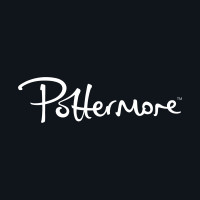
They went to Ilvermorny, and we know more about its origins
North American children go to Ilvermorny School of Witchcraft and Wizardry. Its origins are shrouded in mystery: in the seventeenth century the school was merely a hut, but by the early twentieth century Ilvermorny was considered one of the best institutes of magical learning in the world.
British children with magical abilities get a letter to attend Hogwarts, a sprawling castle in the Scottish Highlands, established in the Middle Ages.
They used different currency
We know that by the eighteenth century, North American wizards used the Dragot – which seems to be the equivalent to the UK Galleon. We wonder what the the US version of the Sickle or Knut is…
American wizards had four leading wandmakers to choose from
There were several established wandmakers of note in North America: Shikoba Wolfe, Johannes Jonker, Thiago Quintana and Violetta Beauvais. The most famous user of a Beauvais wand was the President of MACUSA in the 1920s: Seraphina Picquery.
- We want to see this wand and 2) we’d like one.
North American witches and wizards seemed warier of No-Majs
…than their modern day British equivalents. From what we’ve seen, British wizards tend to find Muggles curious rather than dangerous.
They were right to be wary, as the Salem Witch Trials proved; a number of witches and No-Majs, innocent of any crime, tragically lost their lives during that time.
Pure-blood prejudices didn’t cross the pond
It appears that the pure-blood prejudices sometimes found in Europe happily did not take root in the North American wizarding world.
Making sense of MACUSA
The governments of the British and American magical communities closely resemble their Muggle, or No-Maj, counterparts.
Britain has the Ministry of Magic, with a Minister at its head, while the Magical Congress of the United States of America is run by a President. The British Ministry of Magic keeps a certain degree of ties with the Muggle government; up until the 1920s MACUSA, however, did not.
American witches and wizards had to get good with plants, fast
In the Old World, the local Apothecary was on hand to the witch or wizard looking to brew a potion. The magical immigrants who came to the New World had to wing it a little, and discover the magical properties of the new plants they encountered.
The modern day British had Death Eaters, American wizards had…
… Scourers to contend with. They began as magical bounty hunters, who (literally) cashed in on the void left by traditional law enforcement and hunted wizard criminals worth their trouble.
Magical abilities were often rooted out in the Scourers’ descendants, leaving many later generations with a hatred for all things magical.
A law separated the American wizarding community from No-Majs
A catastrophic romance between a No-Maj Scourer descendent and a witch ended with the No-Maj staging an attack on MACUSA. And you think you’ve had bad dates!
This event brought about Rappaport’s Law, which decreed that No-Majs and wizard-kind should not mix again.
…and Americans had to have a wand permit
Legislation announced by MACUSA at the end of the nineteenth century meant that, unlike witches and wizards in the UK, all US wizards had to carry a wand permit.
The American establishment wasn’t particularly tolerant of fantastic beasts
Pre 1920s, ghosts, poltergeists and fantastic creatures were considered more of a threat by the American wizard government, as they could expose magic to the wider world.
So that was our first look at History of Magic in North America… we can’t wait to see what comes next.



